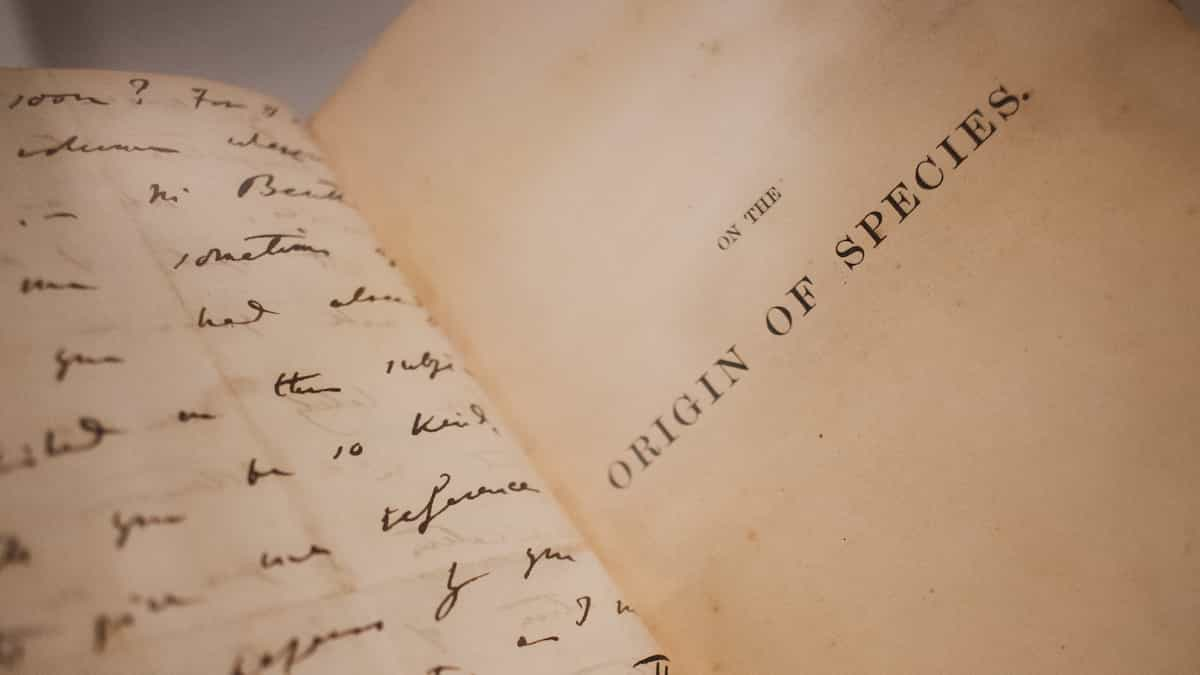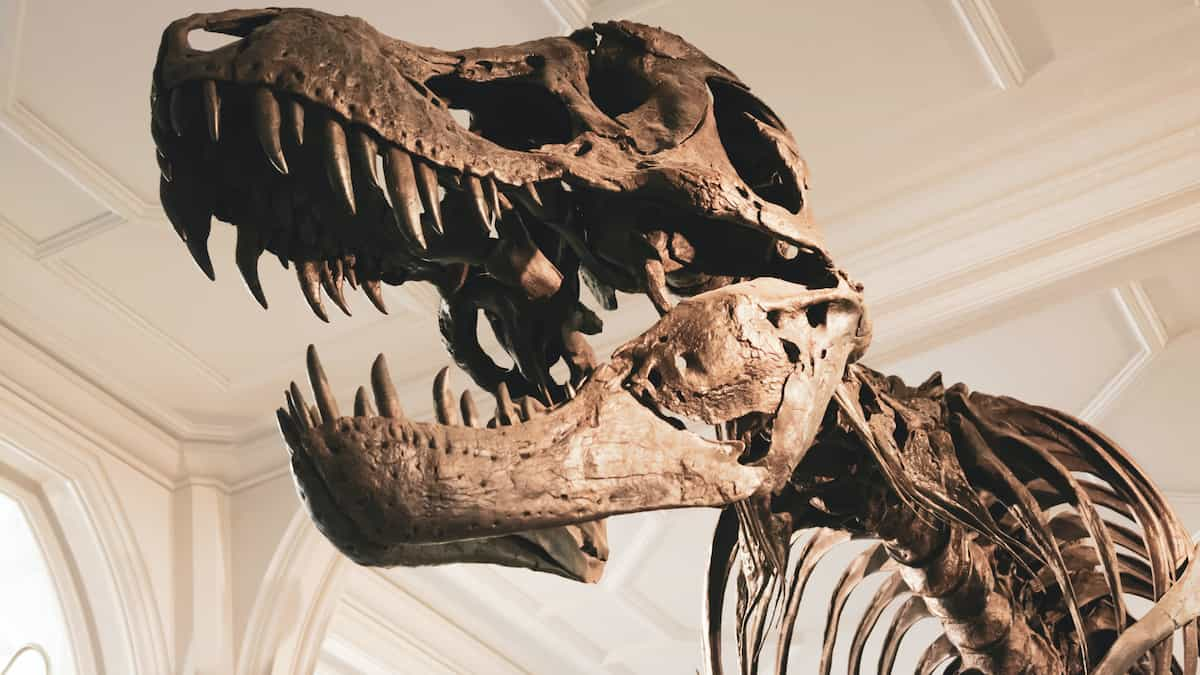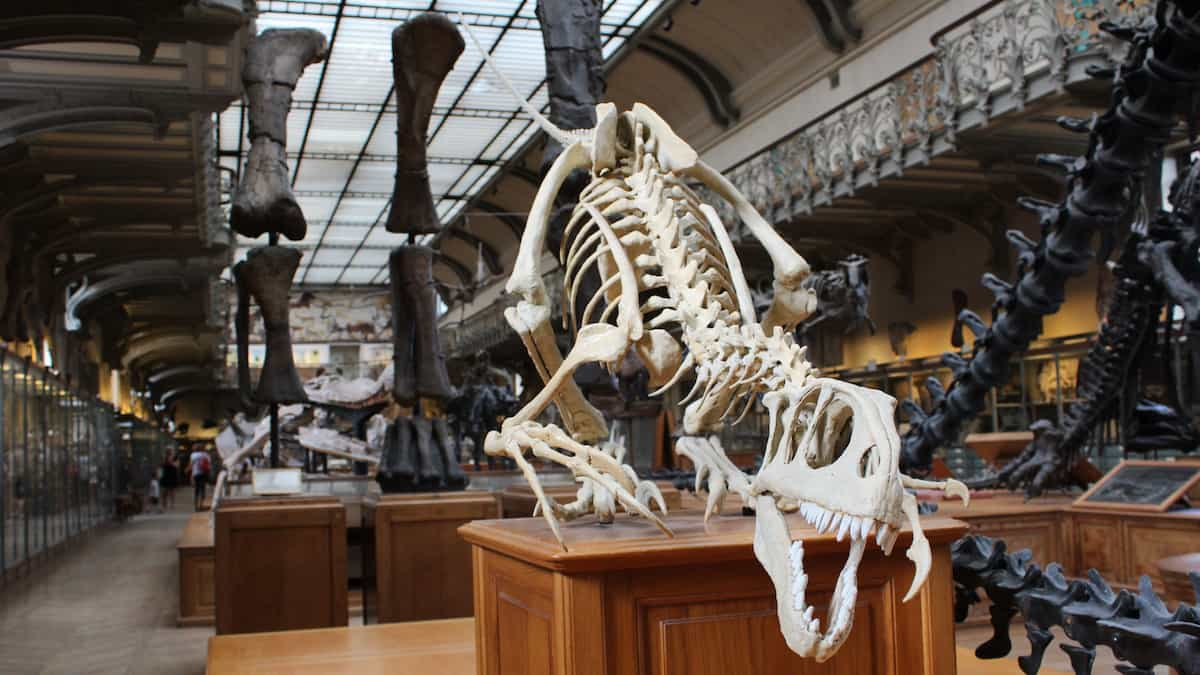- Read efficiently
- Learn the recommended strategy for each question type
- Read the instructions very carefully
- Be careful with timing
- Do some timed practice tests
- Know which question types are in passage order
- Develop your vocabulary
- Ignore what you already know about the topic
- Don’t just do practice tests
- Be careful when you write your answers
- Don’t expect to understand every word
- Skip difficult questions
- Don’t leave any questions blank
- Understand your weaknesses
1. Read efficiently
In IELTS reading, you have just 60 minutes to answer 40 questions, so it’s very important to read efficiently. Otherwise, you won’t have enough time. Skimming and scanning are reading skills that can help you.
Skimming
Skimming involves reading the passage quickly without looking at the details. In IELTS reading, you can use skimming in two main ways.
1. To get a general understanding of each passage
You should quickly skim each reading passage before you look at the questions. Your goal is to understand what the reading passage is about and how it’s structured. This will help you find answers more easily later on.
Spend no more than 1–2 minutes skimming each passage before you get started with the questions. When you skim, you should focus on:
- the title;
- any sub-headings;
- the first paragraph;
- the topic sentences (usually the first sentence of each paragraph);
- the last paragraph.
NOTE: Some teachers also recommend circling or underlining any names, dates, places, etc. that you notice in the reading passage as you’re skimming. There’s nothing wrong with doing this, but make sure you don’t spend too long. It’s important to quickly move on to the questions.
Here’s an example reading passage. The key parts you should focus on when skimming have been highlighted.
↕ scrollable window
Most of us were taught in school that dinosaurs went extinct millions of years ago, but around 10,000 species still roam the Earth: we call them birds. It might be surprising, but the current scientific consensus is that modern birds descended from a group of two-legged dinosaurs called theropods, whose members include the formidable Tyrannosaurus Rex and the velociraptors made famous by the Hollywood film Jurassic Park.
The close relationship between dinosaurs and birds was first put forward after the discovery of a unique fossil named Archaeopteryx in southern Germany in the summer of 1861. This creature, a dozen or so specimens of which have since been dug up, was hailed as a clear transitional step between dinosaurs and birds because of its telling mix of attributes. It had jaws full of sharp teeth – all of today’s birds are toothless – three fingers with claws, as well as the long bony tail characteristic of most other dinosaurs from its time. But it also had prominent feathered wings. The question of whether or not Archaeopteryx was capable of flight had long been the subject of doubt, but recent research has confirmed that indeed it was. By using a special machine called a synchrotron, an international team of researchers was able to determine that Archaeopteryx’s bones, like those of modern birds, were almost hollow.
For decades, Archaeopteryx remained the only link between dinosaurs and modern birds. But in the 1990s, an influx of new dinosaur fossils discovered in China – mainly in Liaoning Province – shed more light on birds’ evolutionary journey. A treasure trove of non-avian dinosaurs and their primitive bird contemporaries were uncovered during this period, often by local farmers rather than palaeontologists. The most significant find of this era was undoubtedly Sinosauropteryx prima, the first known fossil of a non-avian dinosaur with evidence of feathers. This specimen, which had very simple filament-like feathers, taught scientists that it was not only bird-like dinosaurs that had feathers.
Despite these discoveries in Liaoning, scientists still faced gaps in the fossil record, which resulted in disagreement about whether birds pre-dated the mass extinction of the dinosaurs. But it would not be long before an exciting new species was thrown into the mix. Spotted in the rocks of Vega Island in the Antarctic over a decade earlier, Vegavis iaai was finally classified by Julia Clarke and her team from the University of Texas at Austin in 2005. The researchers dated the fossil to around 67 million years ago, just before the asteroid strike that wiped out the non-avian dinosaurs. What makes Vegavis iaai so remarkable is the fact that it looked like a modern duck. Anatomical analyses and a digital reconstruction of the bones revealed that its skeleton has traits that only exist in today’s birds. Examination of a second, more complete Vegavis iaai specimen also revealed the presence of a syrinx, a vocal organ like the ones found in today’s waterfowl. This led Clarke and her team to conclude that the creature not only resembled a duck, but probably quacked like one, too.
In addition to feathers and wings, fossil evidence has demonstrated many other features shared by birds and certain dinosaurs. Although some scientists have maintained that dinosaurs would have had lungs similar to those of today’s crocodiles and other reptiles, Patrick O’Connor from Ohio University believes that some dinosaurs breathed like birds. O’Connor analysed a 67-million-year-old fossil of Majungatholus atopus, a primitive theropod, and compared it to data collected from more than 200 living birds. Based on his findings, he argues that theropods, like birds, probably had air sacs to supply their lungs with air. There also appear to be parallels between birds and certain dinosaurs in relation to reproduction. It is an accepted fact that dinosaurs laid eggs like birds do. Female birds grow medullary bone so as to have enough calcium to make the eggshells needed to form eggs. Evidence of this has also been found in the fossils of a number of dinosaurs, including Tyrannosaurus Rex and Allosaurus. In terms of skeletal structure, there are similarities, too. Wishbones are common to all bird species, but they have also been seen in the fossils of some theropods. This part of the skeleton is formed by the fusion of the two clavicles, which, in humans, are also referred to as collarbones.
Certain dinosaurs also exhibited behaviours similar to those of today’s birds. Fossils of the bird-like dinosaurs Sinornithoides and Mei revealed that they probably slept with their heads tucked under their arms, which is a characteristic of modern birds. It is believed that, like birds, these dinosaurs did this to maintain their body temperature overnight. There is also evidence that some dinosaurs, such as Caudipteryx zoui, a small theropod discovered in Liaoning Province in 1998, ingested stones to break down food. These probably functioned as a gastric mill for grinding up tough plant material and the exoskeletons of insects. This behaviour is present not only in today’s birds, but also in a number of other species including crocodiles and seals.2. With certain question types
You’ll also need to use skimming with certain question types. For example, with Matching headings questions, skimming can help you find the main idea of each paragraph or section. A Multiple choice question might ask you to choose a suitable title for the passage or identify the writer’s overall attitude. Skimming can help you here, too.
With this type of skimming, we move our eyes quickly over the text, concentrating on content words such as nouns and verbs and ignoring other words as much as possible. In your own language, it probably takes you about 20 seconds to skim 100 words. You’ll naturally be slower in English, but you should still aim to skim 100 words in about 30 seconds. The good news is that skimming is a skill that you can improve with practice.
Scanning
Scanning involves searching a reading passage quickly for a specific piece of information. To do this, we move our eyes quickly over the passage, both up and down and left and right. It’s like what you might do at the supermarket when you’re searching the shelves for your favourite chocolate bar.
In IELTS reading, you can use scanning to help you find key words from questions in the reading passage. Once you’ve found key words in the passage, you know you’re in the right place and can then read more closely. In other words, scanning is something you do as you’re working your way through the questions. You’re always looking for something specific when you’re scanning.
For example, here’s a True / False / Not Given question with the key words highlighted.
1 Only one Archaeopteryx fossil has been found.
Names, places and figures are generally the easiest key words to find in a passage because they don’t have synonyms. This means that you don’t have to worry about searching for synonyms as well as the actual key words from the question. Capital letters and numbers also tend to stand out from the passage, making them easier to see. In our example, Archaeopteryx will probably be the easiest key word to find.
Here’s the reading passage. The key word Archaeopteryx has been highlighted wherever it occurs. This makes it clear that the answer to the question will almost certainly be in the second paragraph.
↕ scrollable window
Most of us were taught in school that dinosaurs went extinct millions of years ago, but around 10,000 species still roam the Earth: we call them birds. It might be surprising, but the current scientific consensus is that modern birds descended from a group of two-legged dinosaurs called theropods, whose members include the formidable Tyrannosaurus Rex and the velociraptors made famous by the Hollywood film Jurassic Park.
The close relationship between dinosaurs and birds was first put forward after the discovery of a unique fossil named Archaeopteryx in southern Germany in the summer of 1861. This creature, a dozen or so specimens of which have since been dug up, was hailed as a clear transitional step between dinosaurs and birds because of its telling mix of attributes. It had jaws full of sharp teeth – all of today’s birds are toothless – three fingers with claws, as well as the long bony tail characteristic of most other dinosaurs from its time. But it also had prominent feathered wings. The question of whether or not Archaeopteryx was capable of flight had long been the subject of doubt, but recent research has confirmed that indeed it was. By using a special machine called a synchrotron, an international team of researchers was able to determine that Archaeopteryx’s bones, like those of modern birds, were almost hollow.
For decades, Archaeopteryx remained the only link between dinosaurs and modern birds. But in the 1990s, an influx of new dinosaur fossils discovered in China – mainly in Liaoning Province – shed more light on birds’ evolutionary journey. A treasure trove of non-avian dinosaurs and their primitive bird contemporaries were uncovered during this period, often by local farmers rather than palaeontologists. The most significant find of this era was undoubtedly Sinosauropteryx prima, the first known fossil of a non-avian dinosaur with evidence of feathers. This specimen, which had very simple filament-like feathers, taught scientists that it was not only bird-like dinosaurs that had feathers.
Despite these discoveries in Liaoning, scientists still faced gaps in the fossil record, which resulted in disagreement about whether birds pre-dated the mass extinction of the dinosaurs. But it would not be long before an exciting new species was thrown into the mix. Spotted in the rocks of Vega Island in the Antarctic over a decade earlier, Vegavis iaai was finally classified by Julia Clarke and her team from the University of Texas at Austin in 2005. The researchers dated the fossil to around 67 million years ago, just before the asteroid strike that wiped out the non-avian dinosaurs. What makes Vegavis iaai so remarkable is the fact that it looked like a modern duck. Anatomical analyses and a digital reconstruction of the bones revealed that its skeleton has traits that only exist in today’s birds. Examination of a second, more complete Vegavis iaai specimen also revealed the presence of a syrinx, a vocal organ like the ones found in today’s waterfowl. This led Clarke and her team to conclude that the creature not only resembled a duck, but probably quacked like one, too.
In addition to feathers and wings, fossil evidence has demonstrated many other features shared by birds and certain dinosaurs. Although some scientists have maintained that dinosaurs would have had lungs similar to those of today’s crocodiles and other reptiles, Patrick O’Connor from Ohio University believes that some dinosaurs breathed like birds. O’Connor analysed a 67-million-year-old fossil of Majungatholus atopus, a primitive theropod, and compared it to data collected from more than 200 living birds. Based on his findings, he argues that theropods, like birds, probably had air sacs to supply their lungs with air. There also appear to be parallels between birds and certain dinosaurs in relation to reproduction. It is an accepted fact that dinosaurs laid eggs like birds do. Female birds grow medullary bone so as to have enough calcium to make the eggshells needed to form eggs. Evidence of this has also been found in the fossils of a number of dinosaurs, including Tyrannosaurus Rex and Allosaurus. In terms of skeletal structure, there are similarities, too. Wishbones are common to all bird species, but they have also been seen in the fossils of some theropods. This part of the skeleton is formed by the fusion of the two clavicles, which, in humans, are also referred to as collarbones.
Certain dinosaurs also exhibited behaviours similar to those of today’s birds. Fossils of the bird-like dinosaurs Sinornithoides and Mei revealed that they probably slept with their heads tucked under their arms, which is a characteristic of modern birds. It is believed that, like birds, these dinosaurs did this to maintain their body temperature overnight. There is also evidence that some dinosaurs, such as Caudipteryx zoui, a small theropod discovered in Liaoning Province in 1998, ingested stones to break down food. These probably functioned as a gastric mill for grinding up tough plant material and the exoskeletons of insects. This behaviour is present not only in today’s birds, but also in a number of other species including crocodiles and seals.Recommended overall strategy
Now that you’ve learnt all about skimming and scanning and how to read efficiently, here’s my recommended overall strategy for IELTS reading:
- Step 1: Quickly skim READING PASSAGE 1. Focus on the title, any sub-headings, the first paragraph, the topic sentences and the last paragraph.
- Step 2: Look at the first set of questions (e.g. True / False / Not Given or Note completion) for READING PASSAGE 1 and use the recommended strategy for that particular question type. For many question types, this will involve identifying key words in the questions and scanning for them in the passage. However, for some, such as Matching headings questions, you might have to do some more skimming.
- Step 3: Repeat Step 2 for the remaining sets of questions for READING PASSAGE 1.
- Step 4: Repeat Steps 1–3 for READING PASSAGE 2 and READING PASSAGE 3.
2. Learn the recommended strategy for each question type
In addition to learning an effective overall strategy for tackling IELTS reading, you also need to learn the recommended strategy for each question type. Thankfully, you can use a similar strategy for most question types, but some (e.g. Matching headings) have a unique strategy.
You can learn my recommended strategies for a range of question types here.
3. Read the instructions very carefully
Some question types in IELTS reading, such as Sentence completion and Short-answer questions, tell you how many words and/or numbers from the reading passage you can use in your answers. For example, the instructions might tell you to choose NO MORE THAN TWO WORDS AND/OR A NUMBER from the passage for each answer. If you use too many words and/or numbers in one of your answers, it’ll be marked wrong.
These instructions can be quite confusing, so it’s very important to learn exactly what each instruction means. Here’s an overview of what some of the most common instructions allow you to write.
| Instruction | What can I write? |
|---|---|
| ONE WORD ONLY | - 1 word |
| NO MORE THAN TWO WORDS | - 1 word - 2 words |
| NO MORE THAN TWO WORDS AND/OR A NUMBER | - 1 word - 1 number - 1 word + 1 number - 2 words - 2 words + 1 number |
Here are a few things to keep in mind:
- Even if a number is written as a word (e.g. one hundred), it counts as one number. For example, one hundred doctors = 1 number + 1 word.
- Hyphenated words count as single words. For example, brother-in-law = 1 word.
- Contracted words aren’t tested. This means that words such as doesn’t and won’t will never be part of an answer.
- It’s very uncommon, but you may still be required to write a number even when A NUMBER isn’t mentioned in the instructions. For example, if the instructions say ONE WORD ONLY, four is an acceptable answer. Similarly, ten years is an acceptable answer if the instructions say NO MORE THAN TWO WORDS. Thankfully, questions generally make it very clear when a number is required by using words such as How long, or from the context.
4. Be careful with timing
If you don’t manage your time well in IELTS reading, your score will be affected.
Let’s review some important considerations:
- Each of the 40 questions is worth the same: 1 mark.
- The reading passages gradually become more difficult; that is, READING PASSAGE 1 is the easiest and READING PASSAGE 3 is the most difficult.
- The instructions suggest that you spend about 20 minutes on each passage.
- In the paper-based test, you don’t have extra time to transfer your answers to the answer sheet. You need to allow enough time to do this during the 60 minutes.
Based on the above points, I’d suggest that you spend a similar amount of time (i.e. 20 minutes) on each passage. This includes:
- 1–2 minutes to skim the passage before you look at the questions;
- 18–19 minutes to answer the questions, check your answers and transfer your answers to the answer sheet (if you’re doing the paper-based test).
IMPORTANT: If you’re doing the paper-based test, transfer your answers after each section. Don’t wait until the end of the test! Too many test takers do this and run out of time.
Because READING PASSAGE 1 is the easiest, you may finish it in less than 20 minutes. That’s OK. The important thing is that you don’t rush through READING PASSAGE 1 and make silly mistakes. Also, don’t spend more than 20 minutes on READING PASSAGE 1 or READING PASSAGE 2. You need to make sure you have at least 20 minutes left for READING PASSAGE 3.
As long as you follow these principles and skip difficult questions, I think you’ll find that you have no problems with timing.
5. Do some timed practice tests
Timed practice tests should be part of your preparation for IELTS reading. Here are some sources of high-quality online practice tests:
IMPORTANT: Before you start doing timed practice tests, you need to learn the recommended strategies and do a lot of slow, careful practice. You should only do timed practice tests in the lead-up to your test day.
When you do timed practice tests, you should:
- avoid looking at the reading passages/questions before you start;
- do them under real test conditions (i.e. 60 minutes, no breaks, no dictionary);
- apply the strategies that you’ve learnt;
- carefully review the answers once you’ve finished the practice test – it’s extremely important to understand why you got questions wrong.
6. Know which question types are in passage order
In IELTS reading, the answers to some question types come in passage order. That is, the answer to question 2 will appear in the passage between the answers to questions 1 and 3. However, the answers to other question types don’t come in order. Understanding this can help you find answers more efficiently.
Here’s an overview.
| Are the answers in passage order? | Yes | Not necessarily | No |
|---|---|---|---|
| Multiple choice | ✓ | ||
| True / False / Not Given | ✓ | ||
| Yes / No / Not Given | ✓ | ||
| Matching information | ✓ | ||
| Matching headings | ✓ | ||
| Matching features | ✓ | ||
| Matching sentence endings | ✓ | ||
| Sentence completion | ✓ | ||
| Summary completion | ✓ | ||
| Note completion | ✓ | ||
| Table completion | ✓ | ||
| Flow-chart completion | ✓ | ||
| Diagram label completion | ✓ | ||
| Short-answer questions | ✓ |
7. Develop your vocabulary
IELTS reading is just as much a test of your vocabulary as it is a test of your reading skills. Synonyms and paraphrasing (i.e. using different words in the reading passage and the questions) are used extensively to really make sure you understand what’s in the reading passage.
Here are some examples of synonyms and paraphrasing.
| Question | Passage |
|---|---|
| 5 Researchers believe that Vegavis iaai made the same sound as a duck. | This led Clarke and her team to conclude that the creature not only resembled a duck, but probably quacked like one, too. |
• were swallowed to help with digestion, e.g. Caudipteryx zoui |
There is also evidence that some dinosaurs, such as Caudipteryx zoui, a small theropod discovered in Liaoning Province in 1998, ingested stones to break down food. |
What was the cause of John A. Roebling’s death? |
His condition deteriorated when he contracted tetanus, which claimed his life three weeks later. |
If you understand the highlighted words, these questions are quite easy. Quack is the sound that a duck makes, ingest is a specialist word that basically means eat, break down implies digestion, contract in this context means to catch an illness, and if something claims your life, it kills you.
How to develop your vocabulary
As you know, it takes a long time to develop vocabulary. However, the good news is that you don’t need to know every single word in the English language – you just need enough vocabulary to achieve your target band score.
Here are my recommendations for developing your vocabulary:
- Read extensively. This is by far the most effective medium- to long-term strategy for improving vocabularly (as well as grammar). As you read, you see words used in context and slowly develop a deep understanding of them without the need for a dictionary.
- Use an IELTS vocabulary book. If you don’t have much time and need to build vocabulary in topic areas commonly found in IELTS reading (e.g. science, psychology), this is a good option.
- Study IELTS past papers. You’ll never find a reading passage from a past paper in your actual IELTS test, but there’s certain vocabulary that’s commonly used. For example, a lot of reading passages refer to scientists or other experts. When reporting their opinions and arguments, certain verbs (e.g. argue, contend, assert, take issue with) are often used, so make sure you understand them. In scientific passages, you’ll often find words like experiment, lab, discovery and analysis. Again, make sure you know these common words.
8. Ignore what you already know about the topic
IELTS test writers try to choose topics that most test takers would have little or no prior knowledge of. That’s why many IELTS reading passages seem to be about random, obscure topics.
Occasionally, though, you may still come across an IELTS reading passage based on a topic that you’re familiar with. Perhaps it’s the subject of your university studies or it’s about one of your hobbies. If you find yourself in this situation, it’s extremely important to ignore anything you already know about the topic.
Here’s an example question from a passage about the environment.
The biggest cause of climate change is .
Now, it’s very unlikely that you’d find a question like this in IELTS reading, but I’ve chosen it to illustrate my point. Climate change is a familiar topic, and many of you could probably guess what the correct answer might be – perhaps burning fossil fuels?
In IELTS reading, all of the answers you need can be found in the passage, so you need to go to the passage to find the answer there. If the passage has made a mistake and said that some other cause is more significant, or if burning fossil fuels has been expressed in a different way in the passage, your answer burning fossil fuels would be marked wrong. So don’t take the risk – always refer to the passage!
9. Don’t just do practice tests
Practice tests are an important part of your preparation for IELTS reading. They allow you to simulate what you’ll go through on test day in terms of the level of difficulty and the timing (i.e. 60 minutes).
Many students spend a lot of time doing practice test after practice test, but it’s important to do other types of reading as well. Here are some sources of reading passages that are similar to IELTS reading passages:
When you do this type of reading, choose topics that interest you. Practise your skimming and scanning skills, and note down any unknown vocabulary.
It’s important to learn about the IELTS test and the various question types, of course, but save timed practice tests for the weeks leading up to your test.
10. Be careful when you write your answers
You need to be very careful when you write/type your answers because an answer that contains a spelling or grammar mistake will be marked wrong. For example, if the correct answer is committee, and you write commitee, it’ll be marked wrong.
If you’re doing the computer-delivered IELTS test, you can use “Ctrl + C” and “Ctrl + V” on your keyboard to copy words from the reading passage and paste them directly into the answer boxes. I strongly recommend that you use this functionality.
If you’re doing the paper-based test, be very careful. Always double-check your answers to make sure you haven’t made any spelling mistakes.
REMEMBER: In IELTS reading, if you have to write words, they’ll always come from the passage, so there’s no excuse for making a spelling mistake!
11. Don’t expect to understand every word
IELTS reading can be very challenging. It’s likely that there will be a lot of words in the passage that you don’t know. It’s normal to want to understand every word, but the good news is that you don’t need to.
Here’s an example.
| Question | Passage |
|---|---|
• were swallowed to help with digestion, e.g. Caudipteryx zoui |
There is also evidence that some dinosaurs, such as Caudipteryx zoui, a small theropod discovered in Liaoning Province in 1998, ingested stones to break down food. These probably functioned as a gastric mill for grinding up tough plant material and the exoskeletons of insects. This behaviour is present not only in today’s birds, but also in a number of other species including crocodiles and seals. |
The highlighted words are certainly difficult, but you can still answer the question even if you don’t understand them. The important words in the passage for answering the question are ingested stones to break down food.
12. Skip difficult questions
One of the most important things to learn is when to skip a question. As you know, you have 40 questions to answer in just 60 minutes, which means that you have an average of 1.5 minutes per question. And that’s leaving out time for skimming each passage before you look at the questions and transferring your answers to the answer sheet (if applicable).
If the answer to a question doesn’t present itself quickly, I recommend that you skip it. The worst thing you can do is spend too long on any single question – after all, each question is only worth 1 mark.
Answering other questions from the same set of questions (e.g. a set of Note completion questions) will sometimes help you find the answer to the question you skipped. If not, you can always come back to the question later if you have time.
13. Don’t leave any questions blank
If you haven’t answered all of the questions and there are only a few minutes left, it’s very important to guess. Unlike in some other tests, you don’t lose marks for incorrect answers in IELTS, so you really have nothing to lose by guessing, but you should make sure that your guesses are as educated as possible.
Here are some tips for effective guessing.
For matching-style question types
Look at the answers you’ve already used and choose some of the remaining ones. For example, if you’ve already used A, F, G and H, you should guess with B, C, D and E. It’s true that some matching-style question types let you use each letter more than once, but if it’s almost the end of the test, you don’t have time to worry about this.
For multiple choice–style question types
For Multiple choice questions, the use of A, B, C and D is random, so just pick an answer. However, for True / False / Not Given and Yes / No / Not Given questions, all options tend to be used at least once in each set of questions, so check whether you’ve already used them all. If you find that you haven’t used Not Given yet, for example, use it.
For completion-style question types that require you to choose words from the passage
Quickly look at the part of the passage where you found the other answers in that set of questions. If it’s a question type where the answers are in passage order, use that information to help you find a possible answer. Look at what type of word (i.e. noun, verb, etc.) is needed to fill the gap. Nouns and noun phrases are by far the most commonly used answers.
14. Understand your weaknesses
If you want to improve, you need to understand your weaknesses. After you do IELTS reading practice questions, you must review your answers. For any answers you got wrong, go back to the reading passage and look at the relevant section again. Analyse what went wrong.
| Problem | Possible solution |
|---|---|
| You misunderstood some key vocabulary. | Work on expanding your vocabulary. |
| You made a spelling mistake in your answer. | Double-check your spelling before the end of the test. |
| You ran out of time. | Review your test strategy and time management. |
Also, you might be tempted to keep doing more of your favourite question types (e.g. Short-answer questions) because you’re good at them. However, it’s important to spend more time doing the question types you’re less good at. Otherwise, you’re not really improving.


















